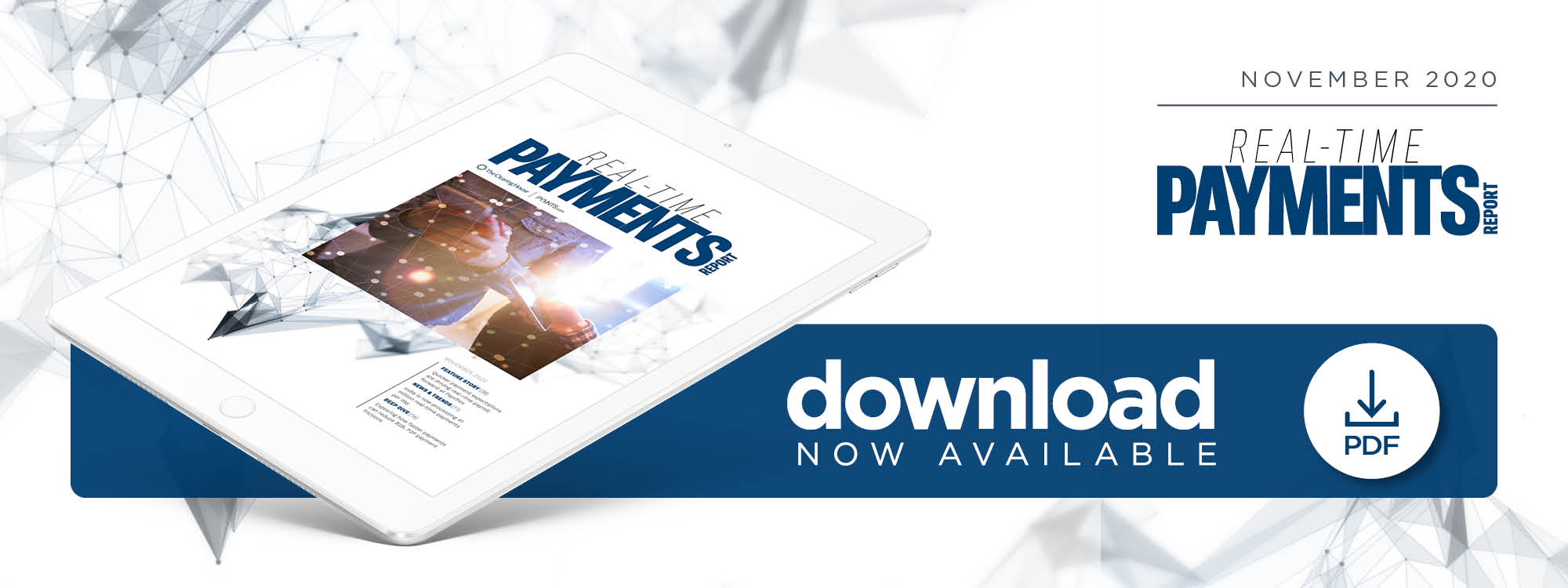Deep Dive: How Real-Time Payments Can Help Meet B2B, P2P Expectations

Consumers and businesses alike have long been familiar with digital payments, but both now expect smoother payment experiences as the COVID-19 pandemic’s financial impacts continue. Friction points that once proved to be minor nuisances have become legitimate financial challenges, especially for consumers and smaller businesses.
Companies attempting to more transparently view their cash flows can no longer afford to spend time processing paper checks, and their use of digital payment tools has thus inched upward. Consumers have meanwhile transitioned even more toward payment solutions that allow them to send or receive money in real time, with P2P apps like Zelle and Venmo reporting jumps in user activity during the first half of 2020. The hunt for faster payment experiences among all users is generating a spike in interest in real-time payments.
Understanding how real-time payments can ease businesses’ and consumers’ friction points first requires recognizing that the two groups have vastly different definitions of “real time.” Some parts of the payment process — especially the finalization of transactions — are typically invisible to consumers, creating the illusion that transactions clear within moments when the bulk of them are actually same-day or next-day ACH payments. Businesses are generally more familiar with the ins and outs of their B2B transaction processes and can therefore comprehend and anticipate some of the stumbling blocks that keep their payments in limbo for weeks at a time.
The following Deep Dive examines how consumers’ and businesses’ unique expectations regarding payment speed are shifting, and why integrating real-time B2B and P2P payments could remove key frictions and offer advantages to these groups. It also examines the challenges that could prevent real-time payment ubiquity and how consumers and businesses can address them.
Payment frictions and P2P’s impact
Frustrations surrounding payment speed are not new, especially in the realm of consumer payments. Real-time payments first filtered into the space with the dawn of P2P payment apps, prompting consumers to expect faster and more transparent transactions as digital payment adoption became more widespread.
Many financial professionals and even merchants now treat the impending dominance of real-time payments in the consumer space as an inevitability. One 2018 survey found that 77 percent of merchants worldwide expected real-time payments to eventually replace plastic payment cards, and this finding came well before any knowledge of a pandemic that would shutter bank branches and see consumers flocking to digital payments.
P2P app use has surged as expected in 2020, with Zelle recently reporting that it has now processed more than 1 billion transactions, for example. Mobile payments platform Square recently noted that only one-third of the transactions it processed in August were made with cash compared to 41 percent during the same month last year.
Consumers’ growing familiarity with P2P apps appears to have shifted their expectations about payment speeds for every transaction, and this is reinforced by the fact that real-time payments are becoming more available overall. One study by TCH observed that 56 percent of checking account holders in the U.S. now have access to such payments via the RTP® network, for example. These trends could ultimately influence consumers’ expectations regarding payment speed for business transactions.
Driving faster payments forward
Businesses are joining consumers in stepping up their use of P2P and mobile payments. Payments made by small businesses via Zelle, which is integrated with the RTP network, rose by 30 percent from Q1 2020 to Q2 2020. It is also notable that 50 percent of Zelle’s users are ages 45 and older. Many of these consumers have owned and operated firms themselves that rely on manual B2B payment processes, but they are now comparing their businesses’ slow legacy payment methods with the real-time transactions enabled by P2P apps.
More businesses are beginning to consider how they can leverage real-time payments in their B2B transactions, and the FIs that serve these firms have taken notice. One recent report found that 74 percent of FIs were considering tapping the RTP network to enhance their payment capabilities and gain an edge over competitors. Eighty-four percent indicated that they would utilize real-time payment services to power other technological innovations. The use of payment tools that bridge the gap between manual and real-time transaction methods is also increasing as Nacha reported that B2B payments volume on its network has increased by 12.4 percent during Q3 2020.
It is clear that consumers and businesses are beginning not only to want but also to expect real-time payments. These payments can provide clear benefits for both groups, meaning FIs and other payment platforms and providers must carefully monitor their growth and be ready to roll out real-time payment solutions to meet this demand.

